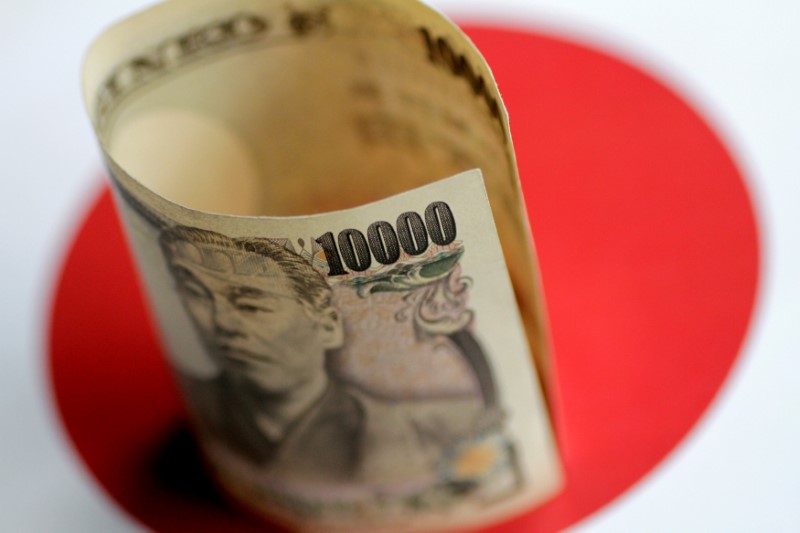Investing.com-- Most Asian currencies retreated on Wednesday, with the Japanese yen hitting its weakest level since 1990 as the dollar firmed ahead of more cues on inflation and the Federal Reserve later this week.
Trading volumes were also somewhat muted ahead of the Good Friday holiday.
USDJPY at 1990 highs on dovish BOJ speak, intervention in focus
The yen weakened on Wednesday, with the USDJPY pair rising as much as 0.2% to 151.97- its highest level since mid-1990.
Weakness in the yen was initially triggered by comments from BOJ board member Naoki Tamura, who said that the central bank will have to proceed slowly and steadily towards normalizing its ultra-loose policy in the coming months. His comments furthered the notion that the BOJ will remain largely dovish in the near-term, presenting little support for the yen.
But further losses in the yen were limited by the prospect of government intervention in currency markets. These fears were in play especially after top Japanese currency diplomats warned that they would not rule out any measures in arresting the yen’s slide.
Finance Minister Shunichi Suzuki said on Wednesday that he would take “decisive steps” against excessive currency moves, echoing his comments from 2022, when the government engaged in record-high levels of intervention to support the yen.
Chinese yuan fragile, USDCNY pushes higher above 7.2
Among other Asian currencies, the Chinese yuan remained weak, with the USDCNY pair rising further above the 7.2 level as sentiment towards the country remained largely dour.
Weakness in the yuan came despite a series of stronger midpoints from the People’s Bank of China, while recent reports also showed the PBOC instructing major state-owned banks to sell dollars and buy yuan.
Sentiment towards Chinese markets remained largely negative, pressuring the yuan as traders saw little improvement in the economy so far in 2024. Chinese industrial profits rose 10.2% in the first two months of the year, but a bulk of the rise was driven by a weak base for comparison from 2023.
Dollar pinned near 1-mth high before PCE data, Fed speakers
The dollar index and dollar index futures rose 0.1% each in Asian trade, extending overnight gains and remaining squarely in sight of recent one-month peaks.
Traders remained biased towards the greenback in the wake of dovish signals from other major central banks, while anticipation of PCE price index data- the Fed’s preferred inflation gauge, along with several key Fed speakers this week also drove up dollar demand.
Strength in the dollar weighed on most Asian currencies. The South Korean won weakened, with the USDKRW pair rising 0.3%, while the Singapore dollar’s USDSGD pair rose 0.1%.
The Indian rupee hovered near record lows hit last week, with the USDINR pair remaining well above the 83 level.
The Australian dollar weakened, with the AUDUSD pair falling nearly 0.2% after data showed consumer inflation remained muted in February, giving more credence to a dovish outlook for the Reserve Bank of Australia.
